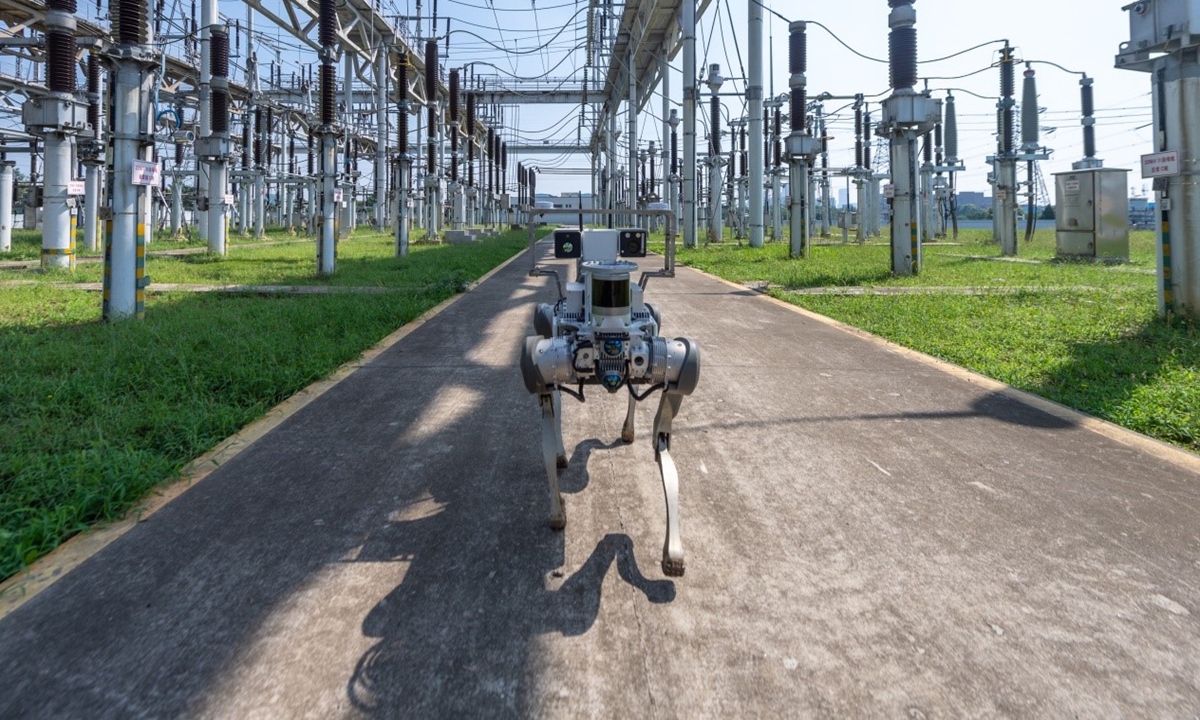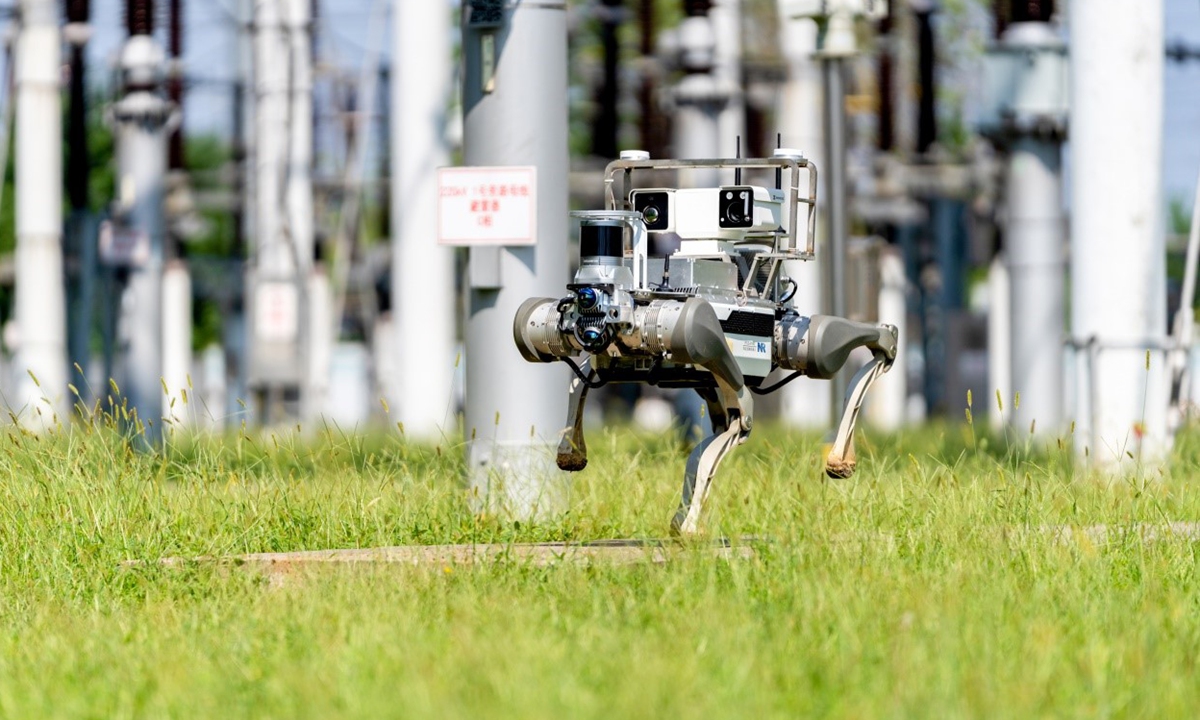SOURCE / PRESS RELEASE
The State Grid Corporation Launches Pilot Application of a New Type of Autonomous Inspection Robot at a Substation in Nanjing
At around 10 am on October 19, a robot resembling a sniffer dog was seen walking through the 500kV Dongshanqiao Substation in Nanjing in Jiangsu Province, making rhythmic rattling sounds at each footstep. Fitted with a pair of bright “eyes,” it constantly scanned the thousands of equipment units around it.
The 500kV Dongshanqiao Substation is an urban hub substation, responsible for supplying power to several districts, including Jiangning and Yuhuatai, two of Nanjing’s industrially-concentrated areas. As a result, the substation is loaded with complex equipment and requires a heavy load of inspection work. Covering an area of 139 mu (nine hectares), the substation is equivalent to the size of 13 football fields. Provided that the inspection work is carried out manually, it would take at least two hours to complete a thorough assessment of each of the 1,900 pieces of equipment and 18,000 designated sites. By contrast, since the introduction of the “sniffer dog” inspection robot in April, it has completed more than 570 inspections and detected a total of nine defects, all of which were identified and reported immediately on the spot.

“This is currently the most advanced ‘sniffer dog’ inspection robot used at substations in China. It is equipped with self-operating core control boards and domestically produced chips. Breakthroughs in several key software and hardware technologies have empowered the robot with excellent vision, intelligence and physical strength,’’ State Grid Corporation staff told the reporter.
A closer look reveals that the “sniffer dog” is about 50 centimeters in height, with various types of sensors mounted on its back and under its belly. A pair of cameras make up its eyes, while the design of its long and strong legs allows the robot to turn flexibly at any time during its operation.
The robotic machine attributes its “good vision” to the integrated application of a high-precision binocular camera, infrared thermometer and voiceprint sensor, enabling it to accurately detect appearance defects, excessive heat and internal faults of nearby equipment. The machine’s “high intelligence” comes from the adoption of the recognition model of deep convolutional neural networks (DCNN) and multi-sensor fusion (MSF) technology, allowing it to independently plan its patrol paths and automatically avoid obstacles. Its warning system activates when it detects an anomaly in nearby equipment. In addition, the robot’s physical strength benefits from the application of advanced image recognition technology and laser radars installed at its front and rear, giving it the speed and stability to climb up and down stairs, move freely on both grass and on cobblestone surfaces near and under the main transformers, an area impossible for traditional wheeled inspection robots to reach.

(Zhang Shuwei)
The 500kV Dongshanqiao Substation is an urban hub substation, responsible for supplying power to several districts, including Jiangning and Yuhuatai, two of Nanjing’s industrially-concentrated areas. As a result, the substation is loaded with complex equipment and requires a heavy load of inspection work. Covering an area of 139 mu (nine hectares), the substation is equivalent to the size of 13 football fields. Provided that the inspection work is carried out manually, it would take at least two hours to complete a thorough assessment of each of the 1,900 pieces of equipment and 18,000 designated sites. By contrast, since the introduction of the “sniffer dog” inspection robot in April, it has completed more than 570 inspections and detected a total of nine defects, all of which were identified and reported immediately on the spot.

“This is currently the most advanced ‘sniffer dog’ inspection robot used at substations in China. It is equipped with self-operating core control boards and domestically produced chips. Breakthroughs in several key software and hardware technologies have empowered the robot with excellent vision, intelligence and physical strength,’’ State Grid Corporation staff told the reporter.
A closer look reveals that the “sniffer dog” is about 50 centimeters in height, with various types of sensors mounted on its back and under its belly. A pair of cameras make up its eyes, while the design of its long and strong legs allows the robot to turn flexibly at any time during its operation.
The robotic machine attributes its “good vision” to the integrated application of a high-precision binocular camera, infrared thermometer and voiceprint sensor, enabling it to accurately detect appearance defects, excessive heat and internal faults of nearby equipment. The machine’s “high intelligence” comes from the adoption of the recognition model of deep convolutional neural networks (DCNN) and multi-sensor fusion (MSF) technology, allowing it to independently plan its patrol paths and automatically avoid obstacles. Its warning system activates when it detects an anomaly in nearby equipment. In addition, the robot’s physical strength benefits from the application of advanced image recognition technology and laser radars installed at its front and rear, giving it the speed and stability to climb up and down stairs, move freely on both grass and on cobblestone surfaces near and under the main transformers, an area impossible for traditional wheeled inspection robots to reach.

(Zhang Shuwei)
